From humble beginnings….
The story of the MG ZR
By Andy Knott
When the Phoenix bid for Rover was accepted by BMW in 2000 John Towers had a saving grace in MG and soon the company was renamed as MG Rover. The appealing ‘bubble’ shape of the then Rover 25 made the MG transformation easy, with a more aggressive stance due to the lower ride height, bigger alloy wheels and the chrome front mesh which really gave this little MG road presence. It was well received by the younger generation, so much so that it was Britain’s most popular sporting hatchback throughout its production life.
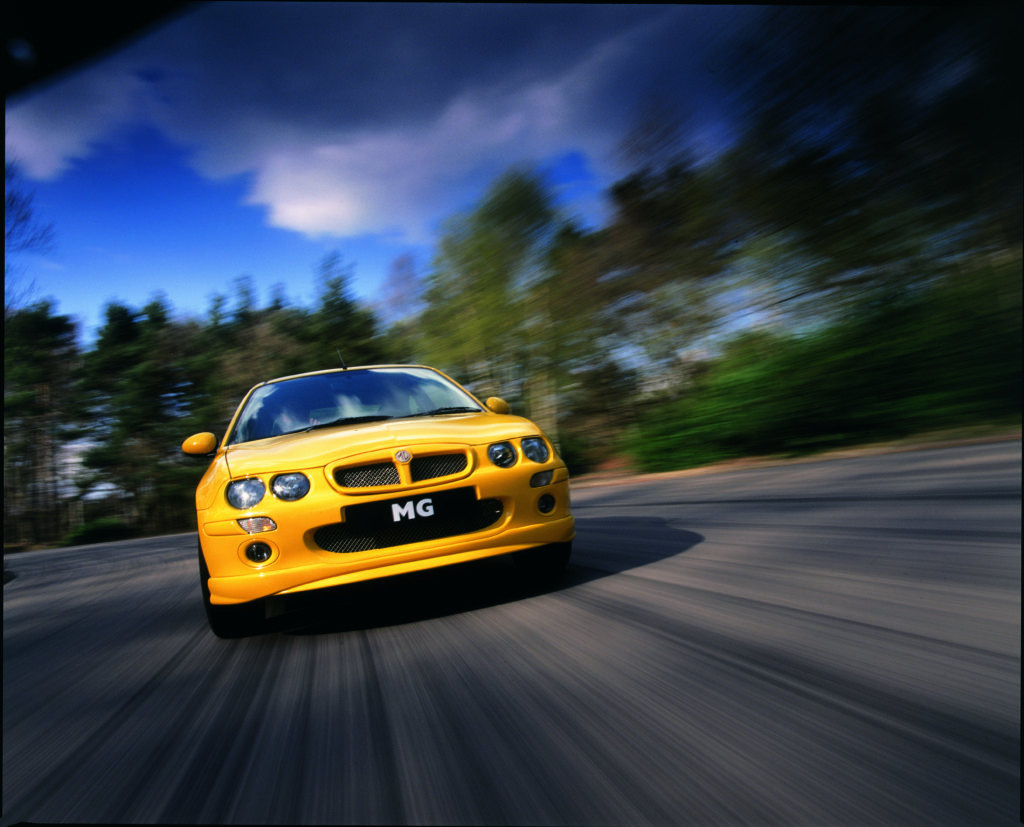
The ZR was launched in a choice of six colours ranging from the suitable classic contemporary Le Mans Green, Anthracite and Platinum Silver to the brighter shades including Solar Red, Trophy Yellow, and Trophy Blue. Instead of following suit with most manufacturers and naming their models L, GL, CD, etc, MG decided to name their Z range of cars on the amount of horse power the engine produced, with a choice of four engines in the ZR range. You had the ZR105 with a 1.4k series, ZR 120 with a 1.8k series, the 101PS and later on 115PS Turbo Diesel and the range-topping 1.8 VVC engined ZR 160.
With a low insurance group of eight and a car that could accelerate from 0-60 quicker than a VW Golf GTi 2.0, it was an instant hit, especially as it came as standard with a sports suspension and lowered ride height, 16″ alloy wheels and a modern interior featuring a Kenwood Stereo. If you wanted a bit more luxury from the 1.4-engined car that would easily return over 40mpg you could always go for the 105+.
Cosmetically, the car only had a couple of minor tell-tale signs over the base model, these being fog lights in the front valence instead of blanks and the black ZR logo found on the boot of the base car being replaced by a more upmarket chrome-effect one. The interior of the car is where MG Rover spent the extra money, with the front wind-up windows being replaced by electrical items, electrically adjustable heated door mirrors, electrical slide and tilt sunroof and a leather-covered sports steering wheel and gearknob. The last three plus options were available as extras on the base model.
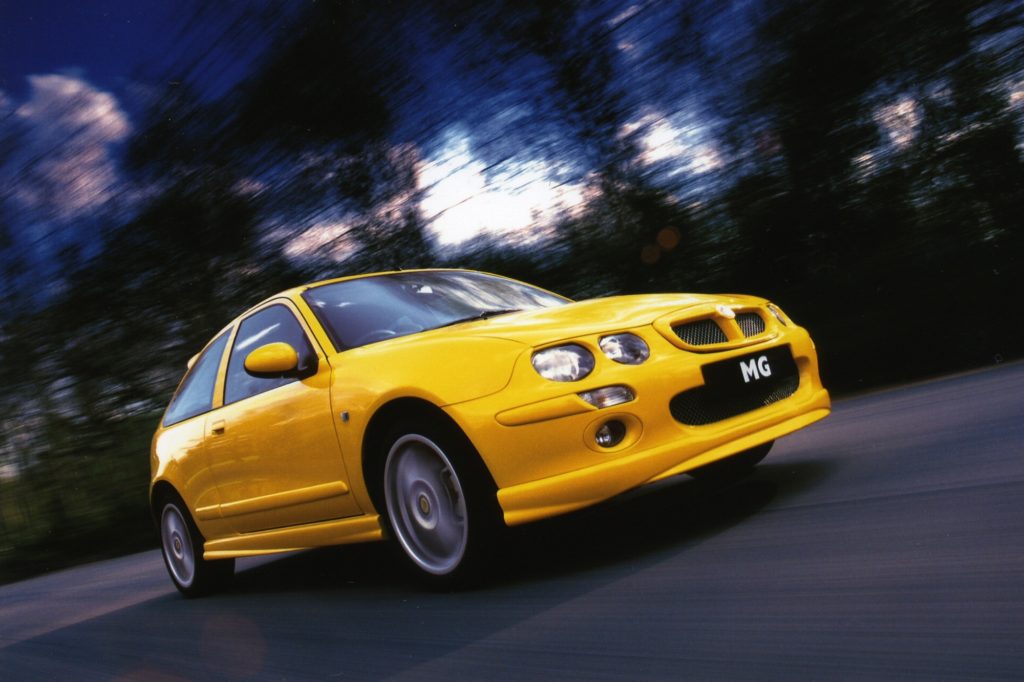
The next model in the range, the 1.8 K-series ZR 120, was also available as a base or plus model with the same exterior styling as a ZR 105. It’s quite difficult to tell them apart, but look closely and you will see that the rear drums found on the 105 have been replaced by solid discs and the front discs are ventilated. With the extra horsepower, the car comes with ABS as standard and will see 60 in 8.6 seconds. The 120 is the only car in the ZR range you could order with the automatic stepspeed gearbox, which is an adaptation from the MGF stepspeed box. The range-topping ZR 160 is quite a different animal altogether.
On the outside it’s fitted with 17″ straight alloys showing off its large front and rear discs, deep body-coloured sideskirts, twin tailpipes with a metal exhaust heat shield, and just to make sure you know it’s the 160 a nice little rectangular 160 badge sits below the ZR logo on the boot lid. The interior is also quite different. The Matrix fabric designed seats found in the rest of the ZR range were replaced by Monaco fabric seats with leather bolsters and colour-keyed inserts. Interestingly, if you wanted air-conditioning in your 2001-2004 pre-facelifted ZR, it was only standard on the 160 but was optional at considerable cost for the rest of the range.
The 1.8 VVC engine had been used in the Rover 200 BRM and later on in the 25 GTi but in its 145bhp guise not the full 160. This extra 15PS takes the ZR from 0-60 in 7.4 and tops out at 131mph, and still manages to return over 35 miles to the gallon. In its day as now, car running costs were an important factor in purchasing a car. MG Rover realised this and from the very start of the ZR production included a Turbo diesel, in many ways the most enigmatic of the range, using their well-proven 2.0 litre L Series engine which had been in production since 1995.
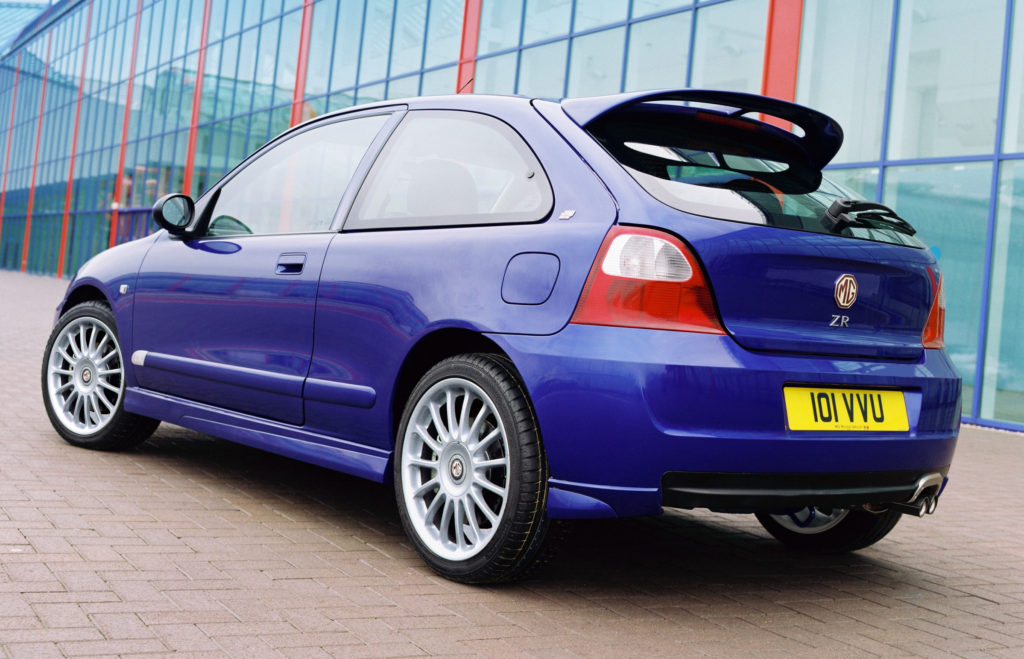
Sporty MKII MG ZR 160 in Ignition Blue 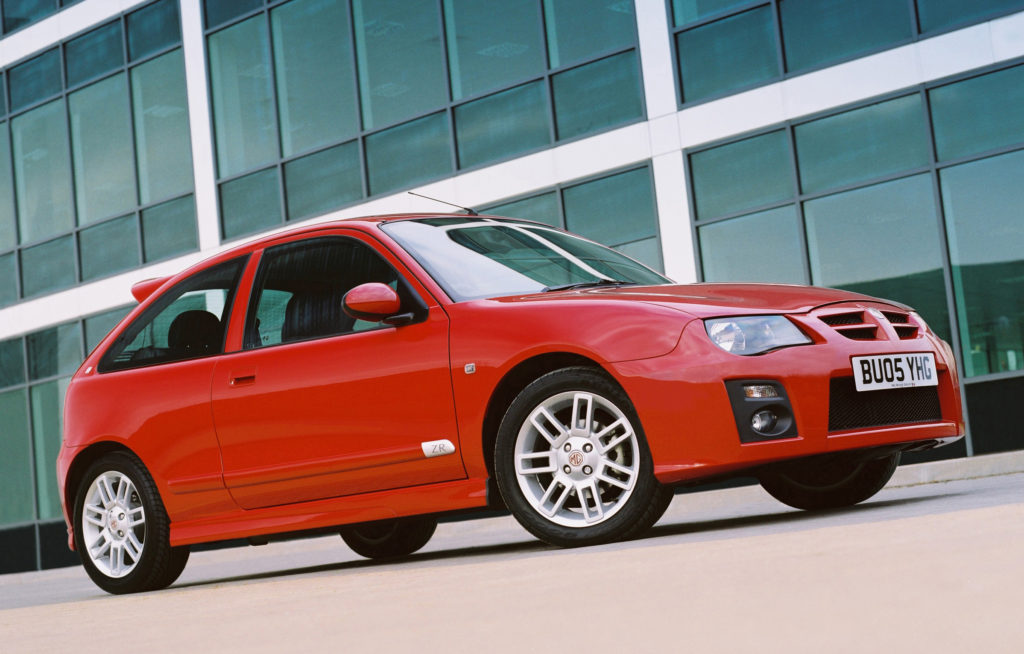
MKII ZR with grid spoke alloy wheels 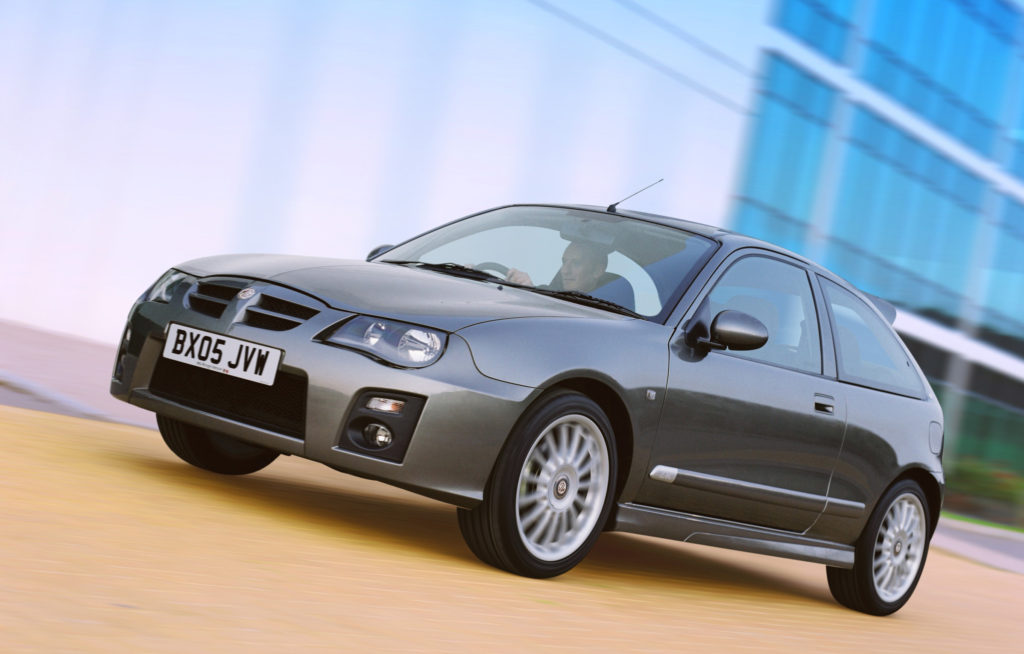
A special edition ZR Trophy SE
Originally starting at a slightly underpowered 101PS in the ZR but in late 2002 being tuned to a near 115PS. OK, the ZR 115 TD isn’t the last word in diesel technology, boasting only a solitary pair of valves per cylinder and no trendy common rail, particulate filtering, exhaust gas recirculating niceties and isn’t regarded as a ‘true MG’ by some purists. But consider this: it has more torque than the MG ZS180 fitted with the 2.5 24 valve V6 engine and can get from 30-50 in fourth gear quicker than a ZR 160; all this and it still returns over 50mpg.
To look at, the diesel ZR it looks like the base and + models – the only giveaway that it’s a diesel being the down-turned tailpipe. The way to tell the two diesel models apart is that the rear brakes differ on the two variations with drums being fitted to the 101PS models and discs to the 115PS version.
“With a low insurance group of eight and a car that could accelerate from 0-60 quicker than a VW Golf GTi 2.0, it was an instant hit.”
In 2004 Peter Stevens was charged with giving the Z range a makeover. The ZR makeover exuded even more attitude than before, with the rear number plate being relocated to the bumper and the front end having the now-distinctive, slatted, colour-coded grille which resembled the MG Supercar, the SV. The facelifted model also received a revised interior with the ZR+ models having a part-leather grey Axis interior. A new ‘technical grey’ dash layout was incorporated which included four satin chrome rotary air-vents. Also, air conditioning was now fitted as standard on the + models in the range.
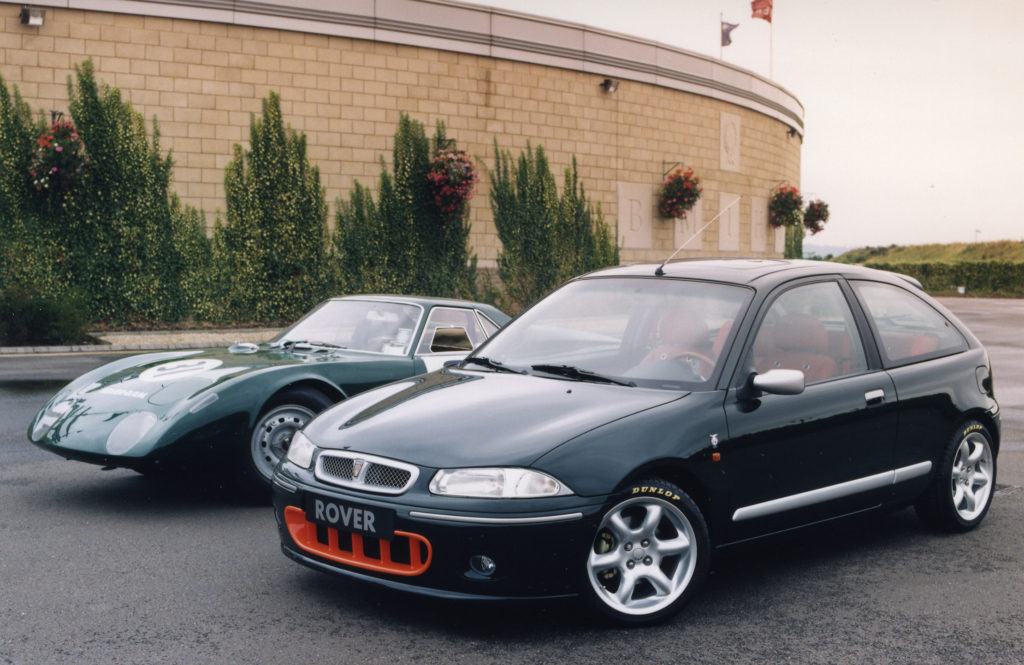
Rover 200 BMR used the range topping VVC K series engine 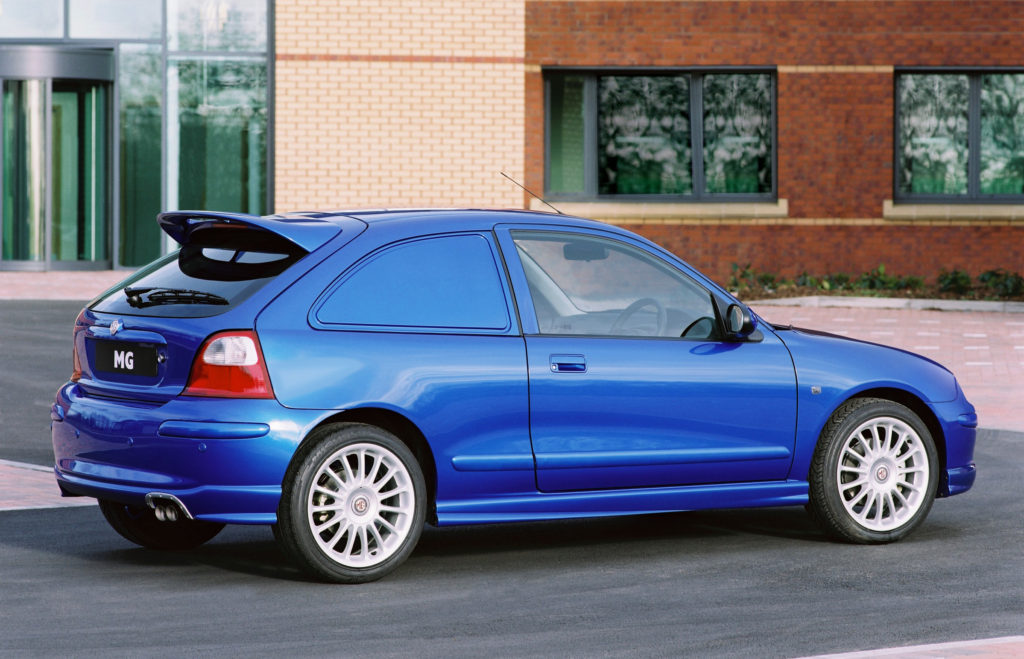
MG Express, a practical ZR van
The only colour which stayed available throughout the whole of the ZR production was Trophy Yellow. The other standard colours available during the last year of production were X-Power Grey (Metallic), Ignition Blue (Pearlescent), Rio Red, Royal Blue (Pearlescent), Goodwood Green (Pearlescent), Starlight Silver (Metallic) and Black Pearl (Pearlescent). As well as the standard colours, there was also MG’s Monogram programme which allowed you to create a truly individual car by specifying a non-standard exterior colour, customised interior and state-of-the-art entertainment system.
With the earliest of the MG ZRs now being 19 years old, it’s getting harder and harder to find a good one. Thankfully, with the help of our ZRZSZT Register beating the drum with their ‘Save our ZEDs’ campaign, more and more of them are falling into the hands of enthusiasts willing to invest in this great little car.
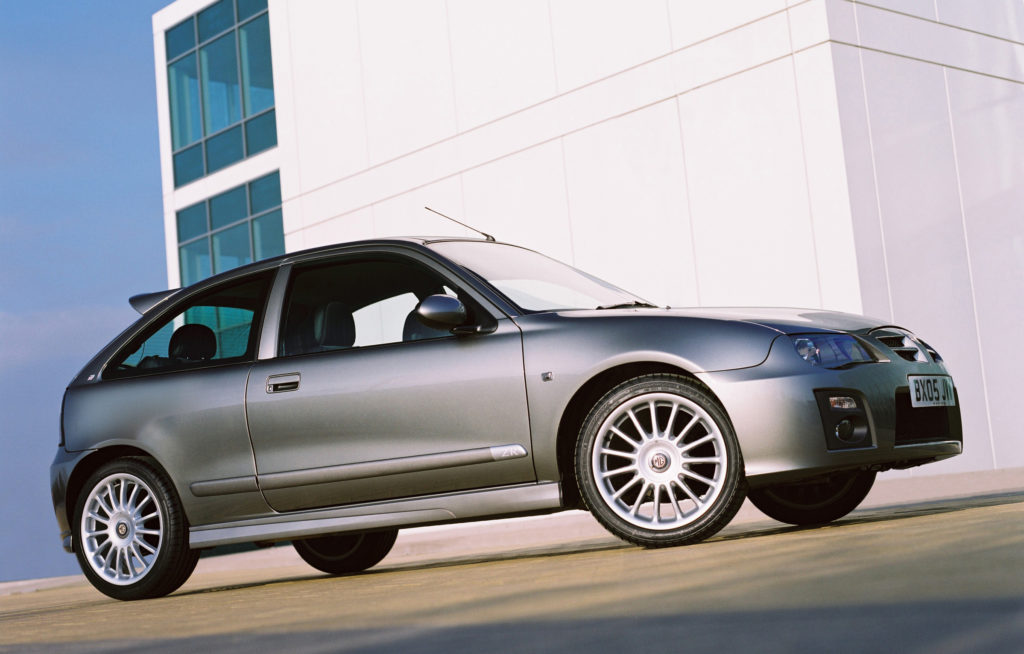
Thinking about getting an MG ZR?
As with any second-hand car, there are a few things to look out for if you decide to purchase an MG ZR. Below is a rough guide to a few of the more common problems.
Body and Exterior
When standing next to the car, look at the brand of tyre and the wear. The better the brand and the fact that they all are the same and have even wear across the tyre is normally a good indication that it’s been well maintained and tracked properly. Check the alloys for kerb damage.
Squat next to the car and check panels for ripples and dents. Pay special attention to the panel gaps, making sure they are all roughly even. Even on some of the last cars to leave the factory some gaps were slightly wider than others. Also, whilst walking around the car looking at the panel gaps, it’s worth checking for patchy paint or overspray on the window rubbers, etc, which is normally the sign of a botched repair.
“In 2004 Peter Stevens was charged with giving the Z range a makeover. The ZR makeover exuded even more attitude than before.”
Open the boot and check the two hinges at the top. These are notorious for trapping water and starting to rust. Finally, feel the bonnet. If it’s warm it could be suffering from a cold start problem of which the current owner is aware and he may have run the engine before you arrived for your inspection!
Engine
A few of the earlier ZRs fitted with the 1.4 K Series engine suffered from piston slap. If the car is started from cold and keeps rattling like a diesel it could be suffering from the above condition, which under warranty usually resulted in a new engine, or at least the pistons and valve guides being replaced. Either way, it will be costly. If you hear a similar noise but you’re looking at the VVC-engined 160 it could be a sign that the VVC mechanism is well worn.
Open the bonnet, check that all the fluid levels are OK, paying special attention to the oil level and colour on the dipstick; the oil should be a golden brown colour, or thin, dark colour if it’s a diesel. If it is a thick black it hasn’t been serviced recently and is due for a change. Open the filler cap and check for a mayonnaise-type substance.
If it’s there it could be the sign of head gasket failure. Another sign is small deposits of oil floating on top of the water in the water reservoir connected to the radiator. The 2003 K series-engined cars were modified having metal dowels, instead of the plastic in earlier cars, locating the head gasket and so seem to be less prone to HGF.
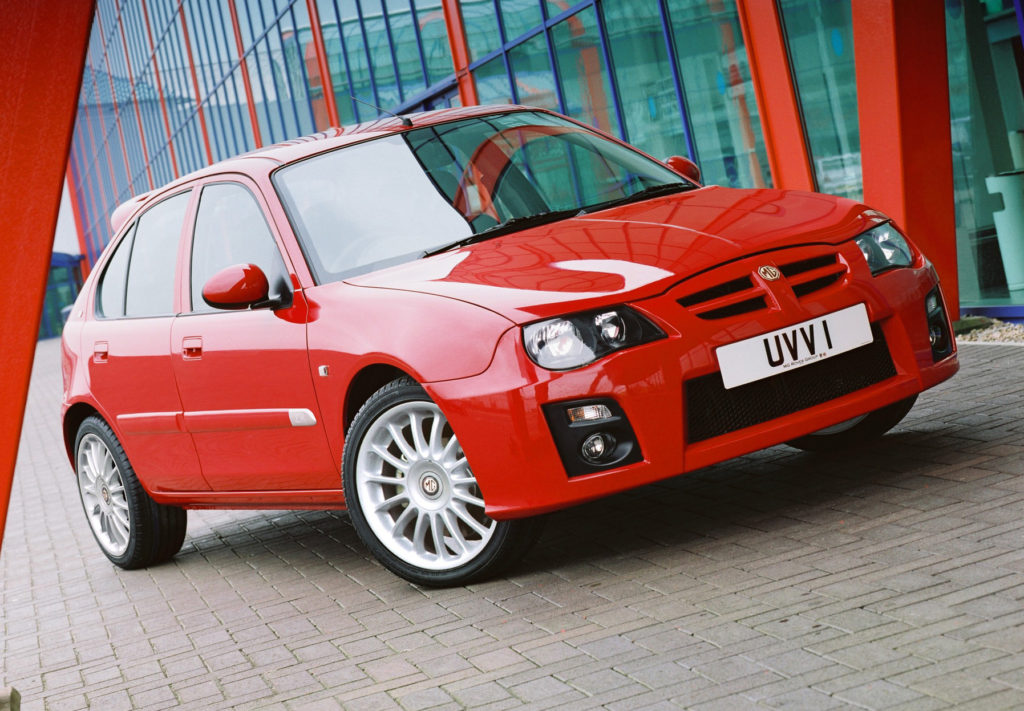
Check the water pump, which is located on most ZRs behind the plastic shield to the left of the engine, for leaks. Whilst looking over the cooling system it is worth checking the radiator for any leakage, green stains or furring from a previous leak. Another, more common, problem is oil leaking from the top front corner of the engine, which is normally down to a faulty or perished camshaft oil seal.
Interior
Before entering the car check that the alarm fob opens all the doors and re-mobilizes the ignition. Once inside check all the electrics, lights and instrument illumination, paying special attention to the electric windows on the ZR+, making sure they both rise and fall smoothly. If they judder or one of the windows drops and will not rise again it’s normally down to a broken plastic clip inside the door. Because the leather side bolsters on the seats are sports seats to give that sports car hugging feel, they are prone to being caught with things in pockets and can be torn.
Car Running
On starting the car check for any smoke from the exhaust. A small amount of white smoke on cold days is fine, but if you get blue smoke (oil burning) or excessive smoke there is probably an underlying problem with the engine. If you hear a rattle coming from under the front, blip the throttle to see if it gets louder as it could be time to replace the catalytic converter.
Next, check the clutch to find out where the biting point is. The more positive the better, and make sure it is about half way up the travel of the pedal. Put the car on full lock before setting off and listen for any clunks coming from the drive shafts. The power delivery is smooth on the K series engine and really seems to come alive the higher up the rev range you go.
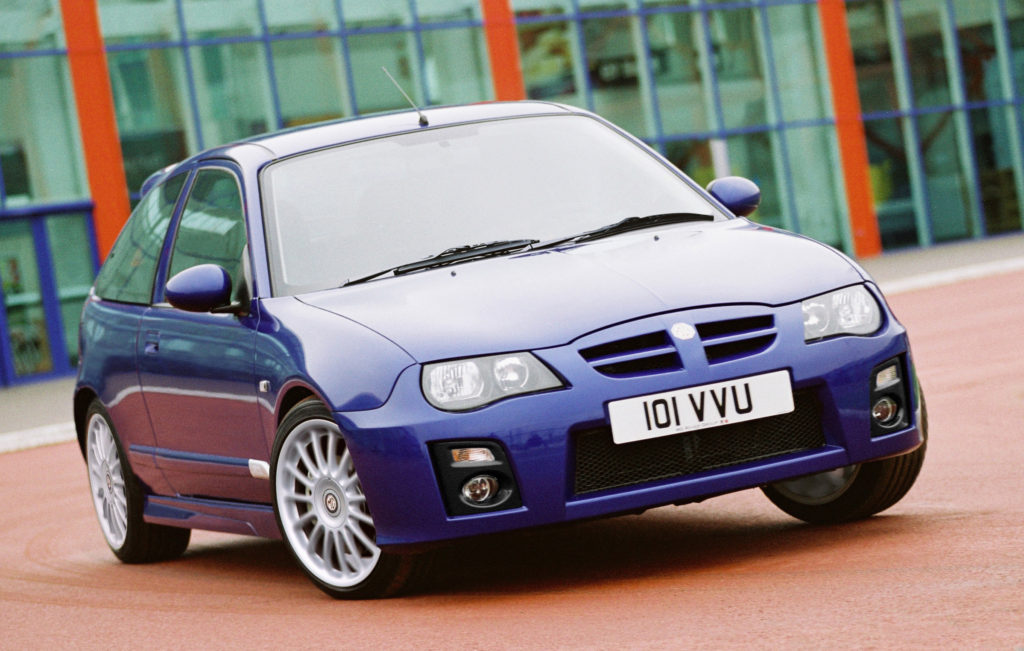
ZR160 in Ignition Blue 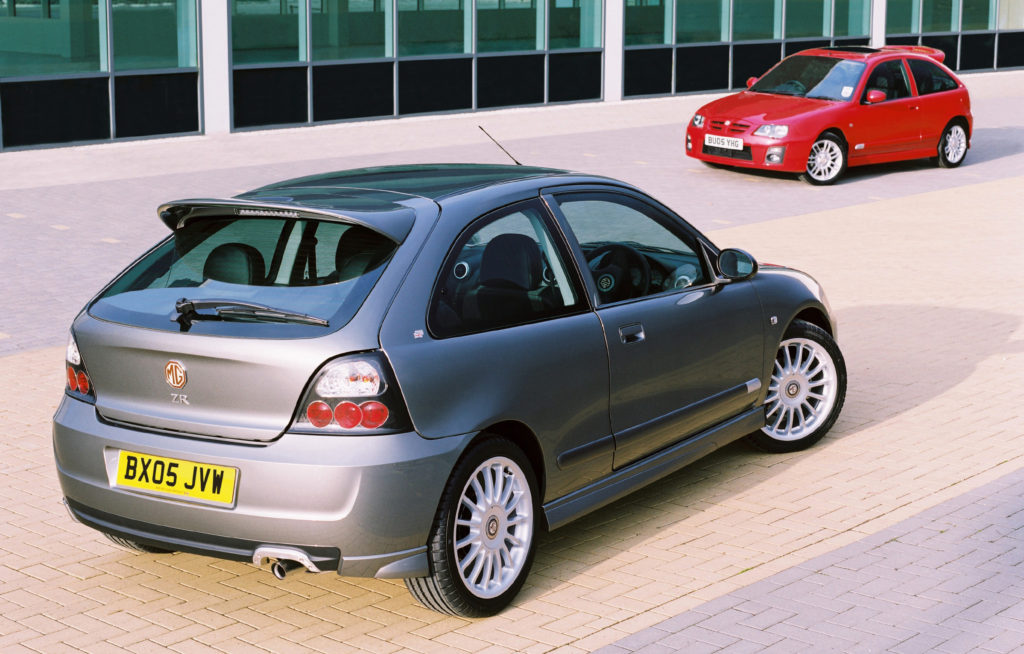
MG ZR Trophy SE models, sporting the Trophy rear lights
The 115PS diesels should pull hard from 1500rpm through to 3500rpm. If the power delivery feels weak it could be the sign of a faulty MAF sensor. The gearbox should be quiet (if it whines, could be due new bearings) and feel positive. If you do drive across any rough area or sleeping policemen listen for a clunk from the rear of the car. If you hear one it could signal that the trailing arm needs replacing.
Paper Work
Check the log book over for any discrepancies and also check the VIN number on the log book against the one on the ZR. The easiest place to check this is located at the bottom right-hand corner of the windscreen, just under the windscreen wiper. Make sure it has a valid MOT certificate. Also, it’s worth checking the service book to make sure it has been serviced and maintained regularly. The more receipts the seller has, the better.
Finally, if you are still unsure of the car, it might be worth getting an HPI check done. There are a number of companies that can do this for you; some of the things they will check for are outstanding finance, previous damage, whether it’s a stolen vehicle and the vehicle identity.

 MG Car Club
MG Car Club